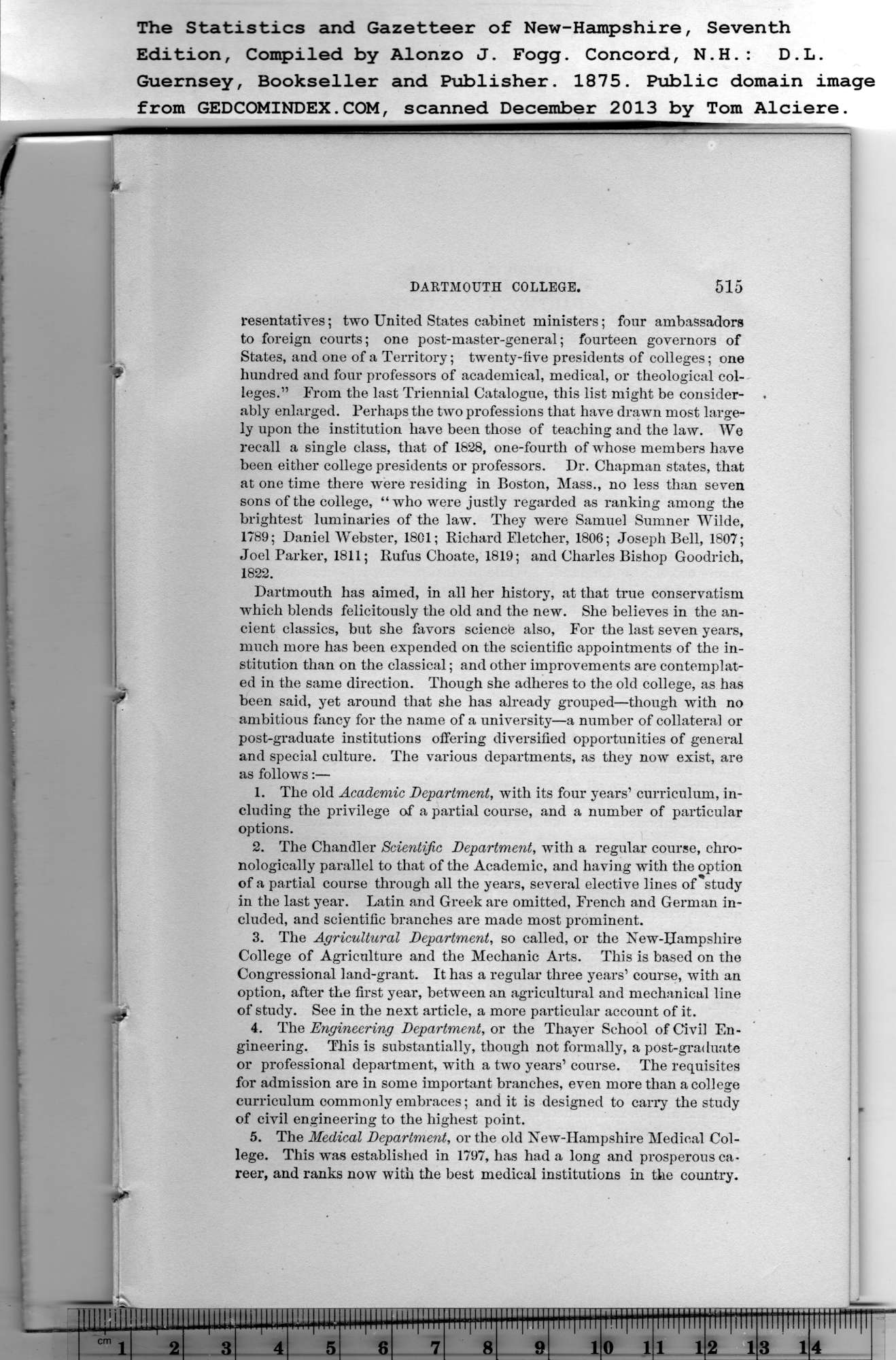|
DARTMOUTH COLLEGE. 515
resentatives; two United States cabinet ministers; four ambassadors
to foreign courts; one post-master-general; fourteen governors of
States, and one of a Territory; twenty-five presidents of colleges; one
hundred and four professors of academical, medical, or theological col-
leges.” From the last Triennial Catalogue, this list might be consider-
ably enlarged. Perhaps the two professions that have drawn most large-
ly upon the institution have been those of teaching and the law. We
recall a single class, that of 1828, one-fourth of whose members have
been either college presidents or professors. Dr. Chapman states, that
at one time there were residing in Boston, Mass., no less than seven
sons of the college, “ who were justly regarded as ranking among the
brightest luminaries of the law. They were Samuel Sumner Wilde,
1789; Daniel Webster, 1801; Richard Fletcher, 1806; Joseph Bell, 1807;
Joel Parker, 1811; Rufus Choate, 1819; and Charles Bishop Goodrich,
1822.
Dartmouth has aimed, in all her history, at that true conservatism
Avhich blends felicitously the old and the new. She believes in the an-
cient classics, but she favors science also, For the last seven years,
much more has been expended on the scientific appointments of the in-
stitution than on the classical; and other improvements are contemplat-
ed in the same direction. Though she adheres to the old college, as has
been said, yet around that she has already grouped—though with no
ambitious fancy for the name of a university—a number of collateral or
post-graduate institutions offering diversified opportunities of general
and special culture. The various departments, as they now exist, are
as follows:—
1. The old Academic Department, with its four years’ curriculum, in-
cluding the privilege of a partial course, and a number of particular
options.
2. The Chandler Scientific Department, with a regular course, chro-
nologically parallel to that of the Academic, and having with the option
of a partial course through all the years, several elective lines of study
in the last year. Latin and Greek are omitted, French and German in-
cluded, and scientific branches are made most prominent.
3. The Agricultural Department, so called, or the New-Hampshire
College of Agriculture and the Mechanic Arts. This is based on the
I - Congressional land-grant. It has a regular three years’ course, with an
i j option, after the first year, between an agricultural and mechanical line
of study. See in the next article, a more particular account of it.
4. The Engineering Department, or the Thayer School of Civil En-
1 gineering. This is substantially, though not formally, a post-grat luate
or professional department, with a two years’ course. The requisites
for admission are in some important branches, even more than a college
curriculum commonly embraces; and it is designed to carry the study
! of civil engineering to the highest point.
, 5. The Medical Department, or the old New-Hampshire Medical Col-
lege. This was established in 1797, has had a long and prosperous ca-
I reer, and ranks now with the best medical institutions in the country.
PREVIOUS PAGE ... NEXT PAGE
This page was written in HTML using a program written in Python 3.2
|
